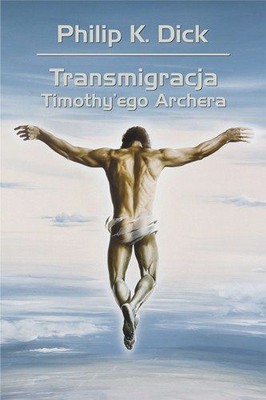


She finds uncomfortable parallels between books and her life. While those around her succumb to suicidal impulses and mental illness she survives by searching her mind for poems and plays she’s read and committed to memory.

They struggle to shape their own individual visions for their lives because they must work in the shadow cast by a giant they love.Īngel Archer, the bishop’s daughter-in-law and the narrator of the novel, becomes one of Dick’s most realistically drawn characters. The actions of Bishop Archer form the arc of the book, and his deeds are a mirror to the other characters. Bishop Archer is the bright flame in this book, the Gatsby who pulls in everyone he encounters - not because he’s influential and wealthy, but because his personality is that rare combination of knowledge and empathy, a true man of God who recognizes no difference between the important writer and the indigent cancer patient. The character of Bishop Archer was based almost entirely on the life of Bishop James Pike, Dick’s friend, who, like his fictional counterpart, died of exposure in Israel’s Dead Sea Desert searching for the sources of early Christian doctrine. The quest for knowledge led him also to adopt a number of intellectual positions that conflicted directly with his duties as a representative of the Episcopalian church - for example, he was brought to trial for heresy for openly questioning the existence of hell and the Holy Ghost. The book is ostensibly based on the life and times of Timothy Archer, the iconoclastic American Episcopalian bishop of California in the 1960s whose unending search for truth led to his becoming friends with Robert Kennedy and Martin Luther King, Jr., advocating for the rights of women, homosexuals, and the transgendered, and time in the national spotlight. Opening on the date of John Lennon’s assassination, Dick writes to commemorate the grinders, the survivors who manage to keep waking up, day after day, despite knowing that life often destroys those who dream too large. While they attempt to make sense of the nature of God and unravel the mysteries of Christian teaching, they confront the questions that must have puzzled even Jesus’ own early advocates: is joy possible when good people are randomly confronted with confusion, pain, and death? Dick tries to locate a mushy but viable middle ground in this sad, nimble, and touching novel.

This is a book written by an author sure of his abilities, one who could confidently make this novel about big ideas turn on his characters’ struggles to control the trivialities of their day to day lives. Suffering is the core of The Transmigration of Timothy Archer, a novel published just months after Philip Dick’s death in 1982.


 0 kommentar(er)
0 kommentar(er)
